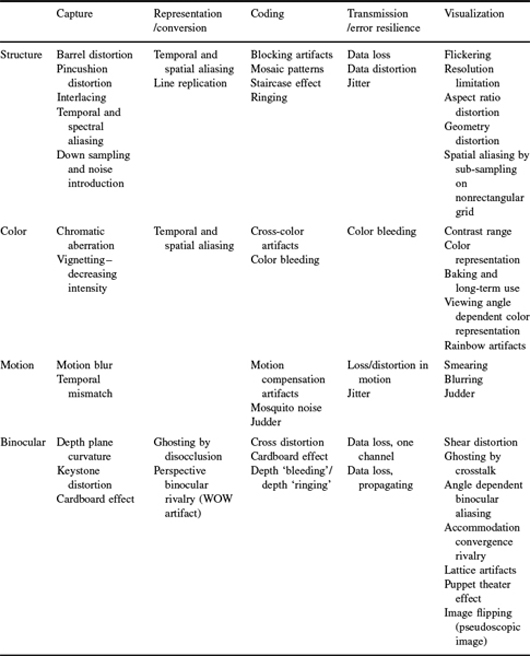7.2 QoE Measurement
The 3D artifacts produced from the current 3D technology pipeline have been introduced in the previous section. Ultimately, a human observer is the final quality determiner and it is important to conduct 3D video quality assessment to measure and ensure the quality of experience (QoE). Therefore, it is of interest to evaluate the perception of 3D videos in the process of acquisition, communication, and processing. Quality assessment (QA) is the term used for techniques that attempt to quantify the quality of a 3D signal as seen by a human observer. Generally, quality assessment plays a key role in 3D video processing because it can be used to:
Table 7.1 Summary of the artifacts for the 3D artifacts [2]. In addition to the stereoscopic artifact, the autostereoscopic display may have unique artifacts, crosstalk, showing up in display [19]. Crosstalk is caused by imperfect separation of the left and right view images and is perceived as ghosting artifacts. The magnitude of crosstalk is affected by two factors: position of the observer and quality of the optical filter. The extreme of crosstalk is the pseudoscopic (reversed stereo) image when the left eye sees the image representing the right view and the right eye sees the image representing the left view

- monitor delivered quality: 3D perceptual degradation is possibly introduced during the process of video capturing, ...
Get 3D Visual Communications now with the O’Reilly learning platform.
O’Reilly members experience books, live events, courses curated by job role, and more from O’Reilly and nearly 200 top publishers.

